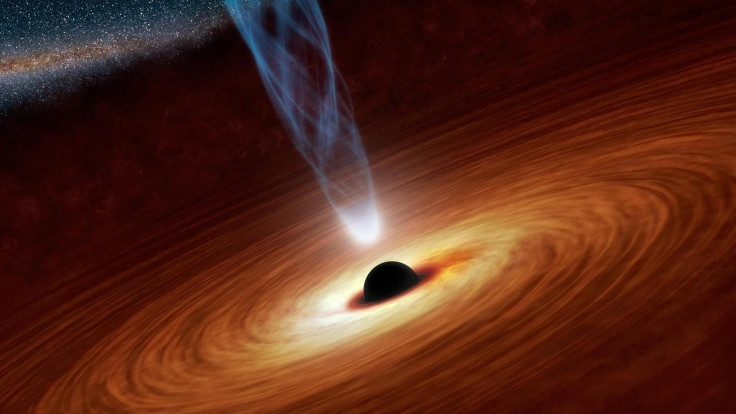Researchers Find Tell-Tale Evidence Of Disk Formation When Black Holes Devour Stars

KEY POINTS
- When stars get too close to black holes, they get torn apart and produce bright radiation
- Whether they produce accretion disks has been a matter of debate among scientists
- Researchers of a new study found tell-tale evidence of disk formation in TDEs
- The evidence was found even without observing x-rays from the event
What really happens when a black hole devours a star? Researchers have now found clear evidence of disk formation in a tidal disruption event.
Stars that pass close to supermassive black holes get torn apart, producing bright radiation as it falls into the black hole. These are called tidal disruption events (TED) or tidal disruption flares and scientists have been debating whether these events really produce accretion disks around the black hole. This is because in most TDEs, scientists don't typically see x-rays, suggesting that the emissions are actually from the collision of stellar debris and not from an accretion disk.
In a new study, accepted for publication in the Astrophysical Journal, a team of researchers provides evidence for the formation of accretion disks.
For the study, the researchers observed a TDE, dubbed AT 2018hyz, after it was detected in November 2018. By January 2019, they detected something unusual using the Shane Telescope at the University of California Santa Cruz (UCSC), the hydrogen line has a "double-peaked profile."
Study co-author Ryan Foley of UCSC said the double peak was a result of the Doppler Effect in which the frequency of light emitted by a moving object changes as it moves closer or farther.
"It's the same effect that causes the sound of a car on a race track to shift from a high pitch as the car comes toward you to a lower pitch when it passes and starts moving away from you," Foley said in a news release. "If you're sitting in the bleachers, the cars on one turn are all moving toward you and the cars on the other turn are moving away from you. In an accretion disk, the gas is moving around the black hole in a similar way, and that's what gives the two peaks in the spectrum."
This supports the theoretical predictions of the formation of accretion disks during a TDE. After studying AT 2018hyz using different telescopes, the researchers surmised that it formed the disk rather quickly after the disruption. In fact, it may have taken place in just "tens of days."
"This is the first solid confirmation that accretion disks form in these events, even when we don't see x-rays," said study co-author Enrico Ramirez-Ruiz of UCSC. "The region close to the black hole is obscured by an optically thick wind, so we don't see the x-ray emissions, but we do see optical light from an extended elliptical disk."
© Copyright IBTimes 2025. All rights reserved.






















